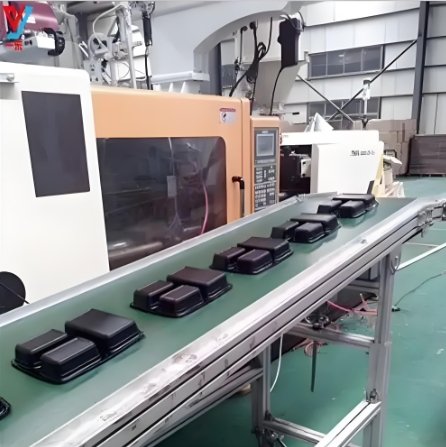
Miniaturized electronics are everywhere. Smartphones, medical devices, and wearables need tiny, precise components. Electronic injection molding plays a key role in making these parts. A mold maker must use advanced techniques to achieve high accuracy. This article explores innovations in molding for small electronic components.
1. The Challenges of Miniaturized Electronics
1.1 Precision and Accuracy
Small electronic parts require extreme precision. Even tiny errors can cause failures. Electronic injection molding must ensure perfect part dimensions.
1.2 Material Selection
The right material is crucial. Small parts need strong, lightweight plastics. A mold maker selects materials that offer durability and conductivity.
1.3 Complex Geometries
Miniaturized parts often have intricate shapes. Electronic injection molding must handle thin walls and delicate details.
1.4 Heat and Electrical Resistance
Many electronic parts face heat and electrical currents. The material must resist these conditions. A mold maker uses high-performance plastics to prevent failures.
2. Innovations in Micro Injection Molding
2.1 Micro-Molding Machines
Standard machines cannot handle tiny parts. Specialized micro-molding machines offer high precision. These machines control injection speed, pressure, and cooling.
2.2 High-Precision Tooling
A mold maker uses advanced tools for accuracy. CNC machining and laser cutting create precise mold cavities. These tools ensure consistency in every part.
2.3 Ultra-Thin Wall Molding
Some electronic parts require extremely thin walls. Electronic injection molding can now produce walls as thin as 0.1 mm. This innovation allows lighter, smaller devices.
2.4 High-Speed Injection Molding
Faster molding speeds improve efficiency. Advanced machines inject material at high pressure. This process reduces defects and increases production rates.
3. Material Innovations
3.1 Conductive Polymers
Traditional plastics do not conduct electricity. New conductive polymers enable plastic parts to carry electrical signals. A mold maker selects these materials for smart devices.
3.2 High-Temperature Plastics
Miniaturized electronics generate heat. Materials like PEEK and LCP withstand high temperatures. These plastics prevent component failure.
3.3 Biodegradable Materials
Sustainability is a growing concern. Some companies use biodegradable plastics. Electronic injection molding now supports eco-friendly alternatives.
4. Advanced Molding Techniques
4.1 Multi-Shot Molding
This technique combines different materials in one part. It improves strength, flexibility, and function. A mold maker uses multi-shot molding for complex designs.
4.2 Overmolding
Overmolding adds a second layer to a part. It improves grip, insulation, and protection. Electronic injection molding uses overmolding for buttons and connectors.
4.3 Insert Molding
Insert molding integrates metal or other components into plastic parts. This process strengthens miniaturized electronics. A mold maker ensures perfect alignment during molding.
5. Quality Control in Miniature Molding
5.1 Real-Time Monitoring
Advanced sensors track pressure, temperature, and material flow. This prevents defects and improves consistency.
5.2 Automated Inspection Systems
High-speed cameras and AI detect tiny defects. Electronic injection molding benefits from real-time quality checks.
5.3 Tighter Tolerances
Precision is critical for miniaturized parts. A mold maker ensures tolerances as tight as ±0.001 mm. This level of accuracy prevents assembly issues.
6. Applications of Miniature Injection Molding
6.1 Wearable Technology
Smartwatches, fitness trackers, and hearing aids need tiny, durable parts. Electronic injection molding ensures lightweight, reliable components.
6.2 Medical Devices
Miniature sensors and implants require biocompatible materials. A mold maker uses advanced molding techniques to meet medical standards.
6.3 Telecommunications
Small antennas, connectors, and circuit housings rely on precision molding. Electronic injection molding produces these parts with extreme accuracy.
6.4 Aerospace and Defense
Drones, satellites, and military electronics need strong, lightweight parts. A mold maker ensures durability for extreme conditions.
7. The Future of Miniaturized Electronics Molding
7.1 AI in Injection Molding
Artificial intelligence optimizes molding parameters. AI improves precision, reduces waste, and enhances quality.
7.2 3D Printing Integration
Hybrid molding combines 3D printing with electronic injection molding. This approach speeds up prototyping and production.
7.3 Nanotechnology in Molding
New nano-coatings enhance material properties. A mold maker can create even smaller, stronger electronic parts.
Electronic injection molding is evolving to meet the demands of miniaturized electronics. Innovations in machines, materials, and techniques improve precision and efficiency. A skilled mold maker ensures high-quality, reliable components. As technology advances, injection molding will continue shaping the future of small electronic devices.
